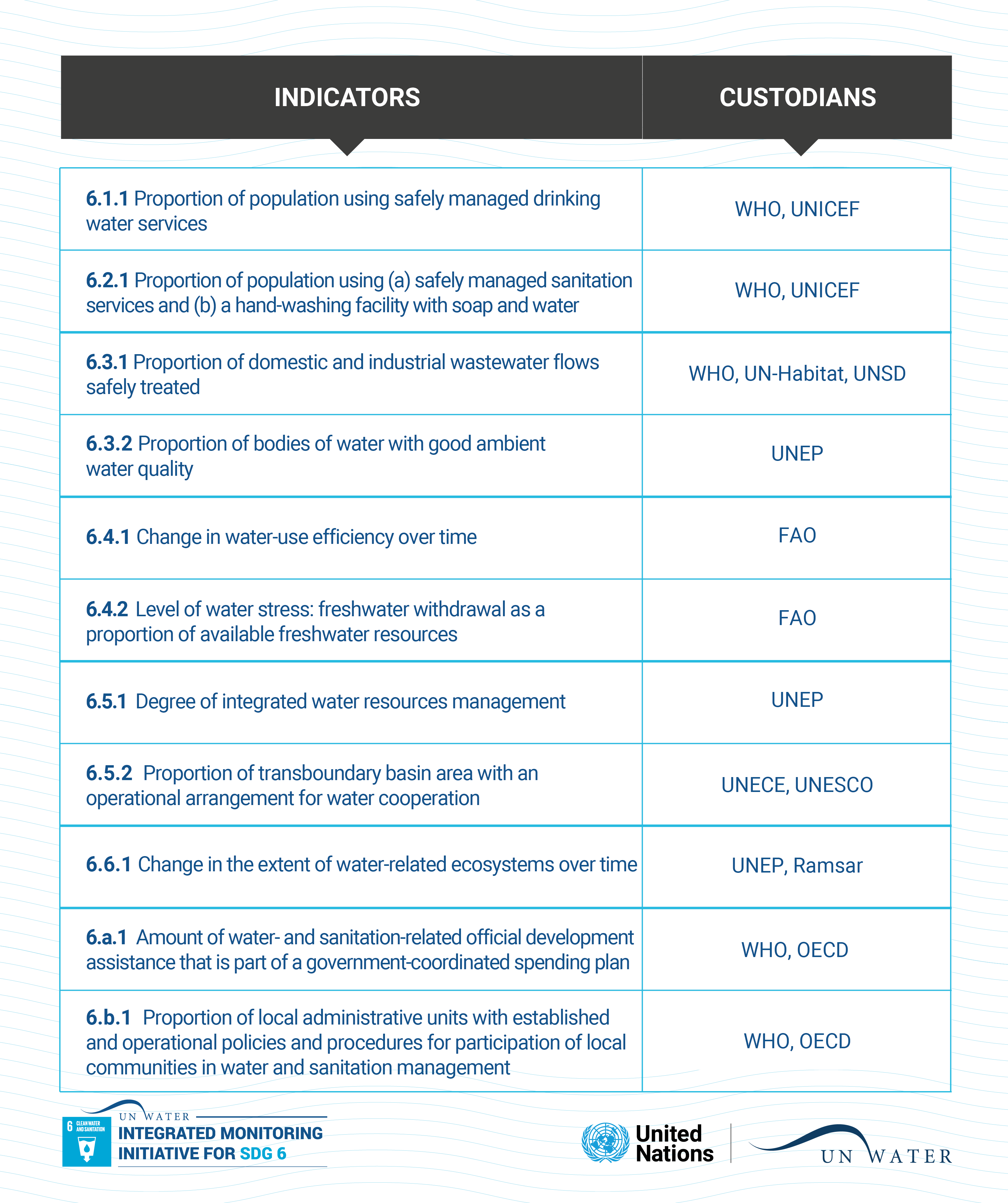SDG 6 indicators and the tiering system


The IAEG-SDG has categorized all the SDG global indicators into three different tiers, depending on the maturity of the methodology to monitor the indicator, and to what extent indicator data are already collected. Tier I indicators have an established methodology and standards, and data are regularly produced by countries; tier II indicators have an established methodology and standards, but data are not regularly produced by countries; and tier III indicators lack established methodology and standards. All indicators are equally important, and the purpose of the categorization is to make sure that due attention is paid to developing methodologies and implementing data collection for tier II and III indicators, including a strong focus on country capacity building. The IAEG-SDG will review the tier categorization once a year and, when an indicator has credible data from at least 50% of the population in each SDG region, it will be included in the annual SDG progress report.
For SDG 6, six indicators are tier I, five are tier II, and non are tier III. The process to develop methodologies and implement data collection for all the SDG 6 global indicators takes place under the UN-Water integrated monitoring framework for SDG 6.
UN-Water Publications
UN-Water’s publications can be divided into two main groups: the publications that represent all Members and Partners of UN-Water – the collective products – and the publications that are under the UN-Water umbrella but produced by groups or individual UN-Water Members and/or Partners – the related products.
